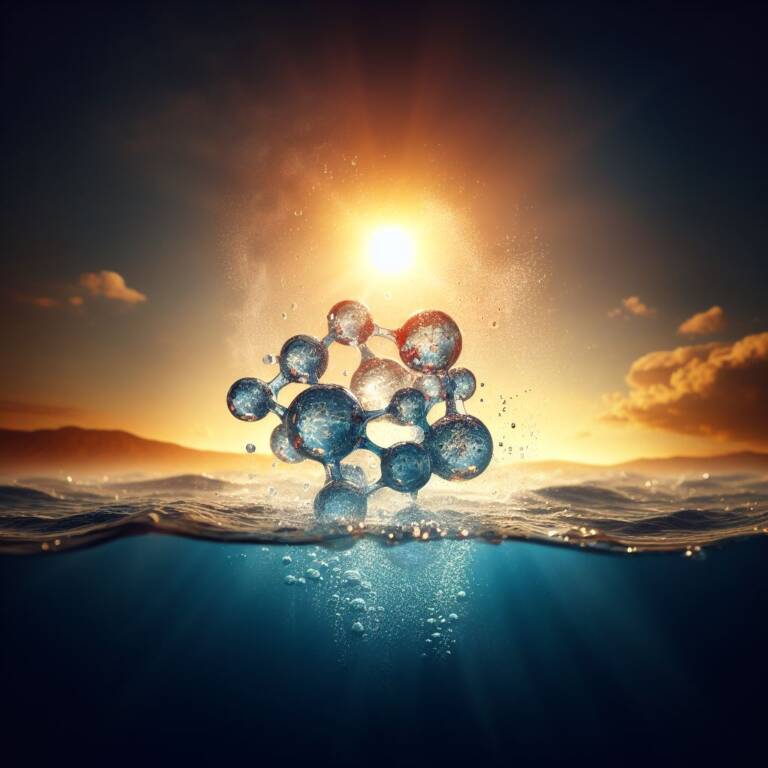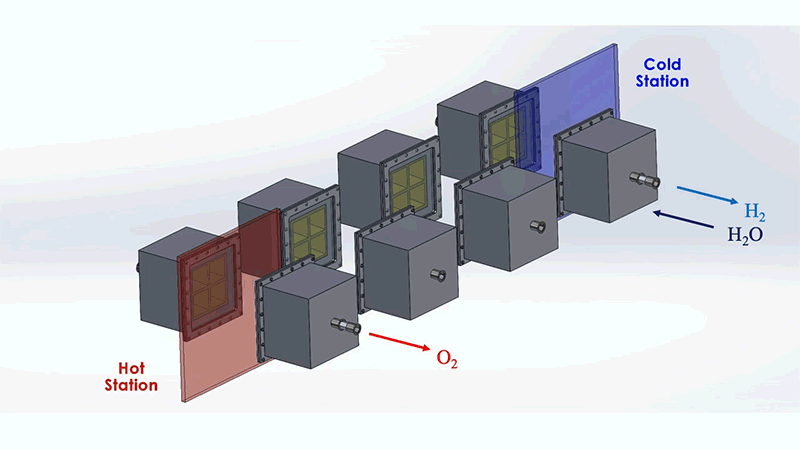MIT designs a very efficient system for splitting water using solar energy

Engineers at the Massachusetts Institute of Technology have designed a system that can efficiently produce “solar thermochemical hydrogen.” It uses the sun's heat to split water and generate hydrogen, a clean fuel that can power long-distance trucks, ships and planes, emitting zero greenhouse gas emissions in the process.
In a study published in Solar Energy Journal , engineers outline the conceptual design of a system capable of efficiently producing “solar thermochemical hydrogen.” The system uses the sun's heat to directly split water and generate hydrogen, a clean fuel that can power long-distance trucks, ships and planes, without emitting greenhouse gases.
Currently, hydrogen is primarily produced through processes involving natural gas and other fossil fuels, making the otherwise green fuel more like a “grey” energy source when considered from the start of production to its end use. In contrast, solar thermochemical hydrogen, or STCH, offers a totally emissions-free alternative, as it relies entirely on renewable solar energy to drive hydrogen production. However, existing STCH designs have so far had limited efficiency: only about 7 percent of incident sunlight is used to produce hydrogen. The results so far have been low yield and high cost.
In a big step toward making fuels produced by the sun, the MIT team estimates that its new design could harness up to 40 percent of the sun's heat to generate much more hydrogen. Increasing efficiency could reduce the overall cost of the system, making STCH a potential scalable and cost-effective option to contribute to the decarbonization of the transportation industry. For comparison, the most effective multilayer photovoltaic cell is capable of converting 32% of solar energy into energy.
Similar to other proposed projects, the MIT system would be paired with an existing source of solar heat, such as a concentrated solar power plant (CSP): a circular area of hundreds of mirrors that collect and reflect sunlight back to a central receiving tower . An STCH system would then absorb heat from the tower and direct it to split water and produce hydrogen. This process is very different from electrolysis, which uses electricity instead of heat to split water.
At the heart of a conceptual STCH system is a two-phase thermochemical reaction. In the first stage, water in the form of vapor is exposed to a metal. This causes the metal to take the oxygen out of the vapor, leaving the hydrogen behind. This “oxidation” of the metal is similar to the rusting of iron in the presence of water, but occurs much more quickly. Once the hydrogen is separated, the oxidized (or rusted) metal is heated under a vacuum, which works to reverse the rusting process and regenerate the metal. With the oxygen removed, the metal can be cooled and exposed to steam again to produce more hydrogen. This process can be repeated hundreds of times.
The study's lead author, Ahmed Ghoniem, professor of Mechanical Engineering at MIT, said: “We are looking at hydrogen as the fuel of the future, and there is a need to produce it cheaply and on a large scale. We're trying to meet the Department of Energy's goal, which is to produce green hydrogen by 2030 at $1 per kilogram. To improve the economics, we need to improve efficiency and ensure that most of the solar energy we collect is used in hydrogen production.”
The authors of Ghoniem's study are Aniket Patankar, first author and postdoctoral researcher at MIT; Harry Tuller, MIT professor of Materials Science and Engineering; Xiao-Yu Wu of the University of Waterloo; and Wonjae Choi at Ewha Women's University in South Korea.
The MIT system is designed to optimize this process. The entire system resembles a box-shaped reactor train running on a circular track. In practice, this track would be set around a solar thermal source, such as a CSP tower. Each reactor in the train would house metal that undergoes the process of oxidation-reduction, or reversible rusting.
Each reactor would first pass through a hot station, where it would be exposed to the sun's heat at temperatures of more than 1,500 degrees Celsius. This extreme heat would effectively extract oxygen from a metal reactor. That metal would then be in a “reduced” state, ready to take oxygen from the steam. For this to happen, the reactor would be moved to a cooler station at temperatures around 1000 degrees Celsius, where it would be exposed to steam to produce hydrogen.
The problem of heat distribution and de-oxidation
Other similar STCH concepts have encountered a common obstacle: what to do with the heat released by the reduced reactor during cooling. Without recovering and reusing this heat, the efficiency of the system is too low to be practical.
A second problem concerns the creation of an energy vacuum in which the metal can degrease. Some prototypes generate a vacuum using mechanical pumps, although the pumps are too energy-intensive and expensive for large-scale hydrogen production.
To address these challenges, the MIT design incorporates several energy-saving features. To recover most of the heat that would otherwise escape from the system, reactors on opposite sides of the circular track can exchange heat through thermal radiation; hot reactors cool while cold reactors heat up. This keeps the heat within the system. The researchers also added a second set of reactors that would surround the first train, moving in the opposite direction. This outer train of reactors would operate at generally lower temperatures and be used to evacuate oxygen from the hotter inner train, without the need for energy-consuming mechanical pumps.
These external reactors would bring a second type of metal that can oxidize easily. As they circulate, the external reactors would absorb oxygen from the internal reactors, reversing the oxidation of the original metal effectively, without the need for energy-consuming vacuum pumps. Both reactor trains would operate continuously and generate separate streams of pure hydrogen and oxygen.
The researchers carried out detailed simulations of the conceptual design and found that it would significantly increase the efficiency of solar thermochemical hydrogen production, from 7 percent, as previous projects have demonstrated, to 40 percent. gneria Meccanica at MIT and by SUSTech.

Thanks to our Telegram channel you can stay updated on the publication of new Economic Scenarios articles.
The article MIT designs a very efficient system to split water using solar energy comes from Economic Scenarios .
This is a machine translation of a post published on Scenari Economici at the URL https://scenarieconomici.it/il-mit-progetta-un-sistema-molto-efficiente-per-scindere-lacqua-tramite-lenergia-solare/ on Sun, 22 Oct 2023 05:30:49 +0000.

